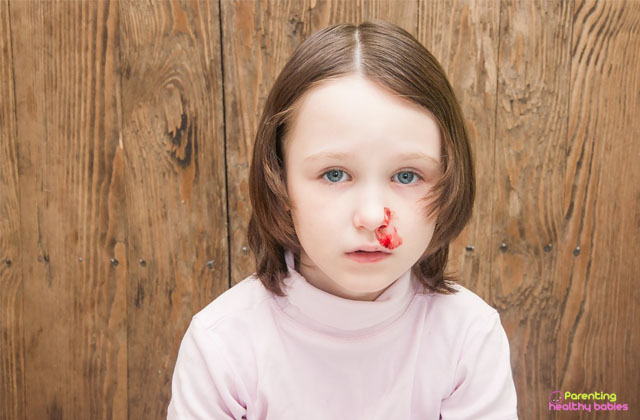A nasal fracture is a crack or break in your child’s nose. Your child may have a break in the upper nose (bridge), the side, or in the septum. The septum is in the middle of the nose and divides his nostrils. They may be caused by a motor vehicle crash, sports injury, or a fall.
Common causes of a broken nose include contact sports, physical fights, falls and motor vehicle accidents that result in facial trauma. Broken nose treatment may include procedures that realign your nose. Surgery usually isn’t necessary for a broken nose.
Broken Nose in Children: 7 Ways to Find Out
Symptoms
You can’t always tell if a nose is broken just by looking at it. Here are some of the signs of a broken nose:
Tenderness in the facial area surrounding the nose
Pain on or in the nose can be quite distressing. It is due to an acute injury like a blow to the face, and specifically when the nose is struck. Acute injury are those that it arises suddenly, causes intense pain and often heals. If the pain is severe it is always advisable to seek medical attention.
Swelling
Straight injury to the nose like traumatic fall or hit by a football can result in external swelling of the nose, especially if the nose breaks. These may be associated with visible deformity and bleeding depending upon the severity of the trauma. For kids, treatment and diagnosis is different because of the bones not fully formed.
Bruising under the eyes (black eye)
Children nose will begin to swell with black eyes within 1 to 2 hours after the injury. It’s usually the result of the trauma to the head or face which causes bleeding beneath the skin.
Bleeding in nose occurs when the small veins in the nose ruptures. It most commonly occurs in children between 3 and 10 years. Excess blood loss leads to symptoms such as weakness, dizziness, and loss of consciousness. In serious cases bleeding nose can be a sign of broken nose. The amount of blood will depending on how badly his nose was broken. Consult your doctor if you observe recurrent bleeding in your child.
Crooked nose
Your child’s nose may look like it has moved out of place. It may bend towards one side of the face or look wider than usual.
Crunching or creaking noise when touching nose
Crunching or crackling sound or sensation like that of rubbing hair between two fingers is felt when touching the nose.
Difficulty breathing through nose
Breathing problems caused due to deviated septum or crooked nose after a break that a children may have. Consult a physician if breathing is compromised.
Diagnosis
- A nose examination will be done to check your child’s injury. Pain medicine are given to the child before his healthcare provider touches and looks at the outside and inside of his nose. Blood clots and check for large hematomas will be removed.(collections of blood).
- An x-ray or CT may show the nasal fracture. Contrast liquid may be given before the scan. Tell the healthcare provider if you have ever had an allergic reaction to contrast liquid.
Treatment
- How to give pain medicine to your child safely should be asked. Medicine may also be given to decrease nasal swelling and help make breathing easier for your child.
- Wound care may help stop bleeding. To soak up the blood packing (gauze or other material) is placed inside the nose by the health care providers.
- Closed reduction may be done to put your child’s nasal bones back into the correct position. Local or general anesthesia is used during this procedure. To put your child’s bones back into place surgery may be needed for severe fractures .
- A splint or packing may be used to help keep your child’s nose in place for 7 to 10 days after reduction. How to care for his splint or packing will be shown to you by your child’s health care provider.
Home remedies
- Applying ice on your child’s nose for 15 to 20 minutes every hour or as directed. Use an ice pack, or put crushed ice in a plastic bag. Cover it with a towel. Ice helps prevent tissue.
- Keep your child’s head elevated when he lies down to help decrease swelling. Ask how you can keep your child’s head elevated safely. There may be need to return for tests or closed reduction.
- Protect your child’s nose to prevent bleeding, bruising, or another fracture. Enquire your child’s healthcare provider when he can return to physical activities such as sports.













